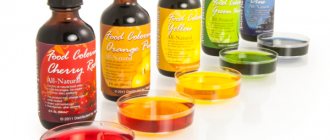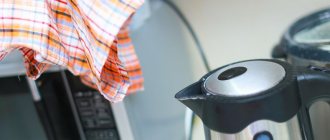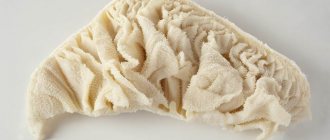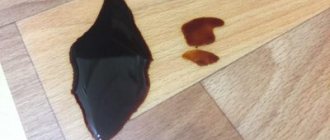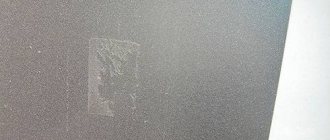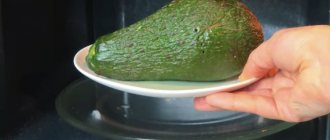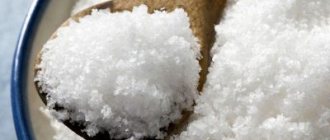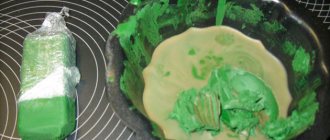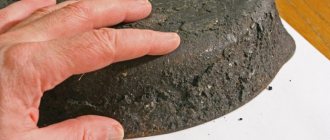Most of us like to start our day with a cup of coffee or tea. These drinks are traditional in many countries. It is impossible to imagine the life of a modern person without them. Tea and coffee are dark-colored drinks that have a coloring effect.
It's nice to take your favorite cup and pour a fragrant drink into it. However, her mood in the morning can ruin her appearance: indelible stains from tea or coffee give her a repulsive appearance. The dishes become untidy. It not only irritates, but also causes a feeling of shame if you have guests and you want to treat them to tea. Of course, any housewife worries about being considered dirty. Therefore, many, especially young housewives, see the only way to solve the problem - to throw away the cups that spoil their reputation.
Is it possible to cope with the tea stain that spoils the appearance of our cups? There are many remedies to solve this problem that you probably have in your kitchen. They will help get rid of disgusting stains from tea or coffee. We invite you to get acquainted with several ways that will allow you to return your dishes to their original cleanliness.
Baking soda and water
Sodium bicarbonate is a long-standing and reliable assistant for housewives. This white powder easily removes tea or coffee stains. Alkali eats away stains, weakening their intensity. But this is not enough to completely remove plaque. It will take a little effort to get rid of it, and the abrasive properties of baking soda will serve you well in this job.
To prepare a cleaning solution for 1-2 cups, you will need a spoon of baking soda and water, as well as a napkin or towel. Place baking soda in a cup and add enough water to form a paste. Treat the inner and outer surfaces of the cup with this mixture and leave it in this condition for 5-10 minutes. Using a cloth or sponge, clean the cup with the paste, then rinse thoroughly with plenty of running water and wipe dry with a towel.
Why does the teapot need regular cleaning?
Even after a short period of use, you can notice that the strainer inside the teapot becomes clogged and acquires a brown tint. This occurs due to the coloring pigment contained in tea - tannin. Even if you thoroughly rinse the dishes after each brewing of tea, the problem of plaque will not disappear. If there is no cleaning, the teapot strainer will gradually stop letting tea through, and specks will begin to enter the aromatic drink, clogging the holes.
You can avoid the need to combat plaque by using tea in disposable bags. But such a drink will turn out less aromatic and tasty. And the benefits of it are very doubtful. This is due to the technology for creating such teas. They usually do not contain carefully selected, high-quality and whole tea leaves, but industrial waste.
Melamine sponge
These magic erasers, which appeared on sale relatively recently, do an excellent job of cleaning dishes. They are made from melamine foam and only require water for them to show off their wonderful properties. Judging by the reviews, they cope with stubborn and difficult stains (crayons and ink, scuff marks). Although flexible and soft to the touch, this foam acts like the finest sandpaper and can remove tough and stubborn coffee and tea stains.
"Dad is offended." Agata Muceniece about her relationship with Priluchny after the divorce
Women's jeans: before you buy them, you need to pay attention to one detail
If there is little snow, there will be no harvest: December 16 is Ivan the Silent Day
Pour water into a container convenient for you and dip a sponge into it. Squeeze out excess liquid and wipe away any existing stains. All that remains is to rinse the cup and wipe dry with a dish towel.
Proper drying
Excess moisture must be removed - the aesthetics and service life of fine porcelain directly depend on proper drying. Water stains appear due to the fact that the dishes have not dried completely - over time, microcracks form on the surface and the color fades. Drying will help prevent this.
You need to dry sets, tureens, menageries, vases and other items on a flat, durable surface - a kitchen table is quite suitable. After rinsing, clean dishes are placed upside down to allow the water to drain. The table is pre-covered with a soft towel, which quickly and completely absorbs moisture. As soon as the water has drained, the porcelain is wiped dry and shiny with a soft towel. It is important not to overdo it, because the thin translucent glaze and colored decor (if any) can be easily damaged.
Salt
Regular table salt will help get rid of plaque: rub the surface of the cup with it. However, microcracks from salt particles may appear on the ceramic surface. As a result, such damage will only speed up the staining process. Therefore, you should use only finely ground salt or prepare a concentrated solution. For 0.5 liters of water you will need a teaspoon of salt.
Causes of plaque
Plaque on the walls or bottom of the kettle is a deposit of impurities contained in the water. Salts, iron and other substances that make up tap water make water hard. After boiling, they do not dissolve completely, but settle on the bottom and walls of the device - this is the mechanism for the appearance of plaque. As a rule, the places where it forms are the inner walls of the kettle and the bottom, and in electrical appliances - the heating element.
Why you need to get rid of plaque
The scale that forms is harmful to both the person and the kettle itself. Thus, the lack of timely cleaning of the device contributes to the formation of favorable conditions for the growth of bacteria. In the future, this may cause various diseases or food poisoning. Drinking water with scale particles introduces harmful elements into the body, which can have a negative effect on the kidneys or bladder. Also, plaque particles can lead to blockage of blood vessels or veins, which can lead to diseases such as thrombosis, atherosclerosis, myocardial infarction and others.
The formed layer does not allow the kettle itself to quickly heat the water, as a result of which the device breaks down prematurely due to the resulting overvoltage. This applies to electric kettles. In others, plaque can lead to gradual destruction of the material from which the equipment was made. Therefore, it is necessary to get rid of plaque at the first signs of its appearance. More on how to do this below.
Using salt and vinegar
Another very effective mixture that will help get rid of difficult and old stains. Removing tea and coffee stains is one of the many uses of vinegar, which is moderately acidic. Thanks to it, vinegar dissolves the pigments that make up the stain.
The money tree pleases with lush flowering: my secret is in caring for the leaves
A Brazilian travels 36 km by bike every day to take his loved one home.
A student at the Vietnam Police Academy shared how she takes care of her facial skin.
Salt helps in this reaction, which gives the composition abrasive properties. You will need two tablespoons each of vinegar and salt. Wash the cup with a sponge to remove surface stains.
Make a paste of salt and vinegar and apply it to the surface of the cup. Leave it on for about 10 minutes. Then wipe it with the hard side of the sponge to remove all stains. Then rinse it under running water and wipe dry.
Coca Cola
Coca-Cola and similar drinks contain phosphoric acid, which can remove any type of plaque from many surfaces in a short time.
If the stains are light: pour Coca-Cola into the kettle and leave for several hours. Then drain and evaluate the result. The procedure can be repeated if necessary.
If there is a strong coating: heat the Coca-Cola without boiling and pour it into the kettle. Then proceed as in the first point.
After clearing the kettle of deposits, rinse it with water and set it to dry.
Toothpaste
A very original method, although today toothpaste is often used for other purposes. Regular whitening toothpaste is effective for more than just making your teeth dazzlingly white. Many housewives successfully use it to remove traces of their favorite drinks from mugs and cups. Toothpaste contains mild abrasives: dehydrated silica gels, calcium carbonate, phosphate salts, magnesium carbonates and silicates that remove surface stains. The mechanism for removing them is very similar to what happens when you brush your teeth every day.
Why French children behave well: eight ways to raise them
It’s good to wash often: myths about shampoo and hair care that only harm
“We are still friends”: Derevianko commented on the breakup with his wife
You will need: white paste, toothbrush, napkin. Apply the paste to the dirty surface using a toothbrush. Be especially careful on the bottom curves of the mug. Let the paste dissolve the plaque for 10 minutes. Then wipe it with a napkin. After this, rinse off the composition and wipe the cup dry with a towel.
The influence of the chemical composition of tea on film
Tea leaf extract is a complex chemical compound. The composition includes catechins, theaflavins, thearubigins, caffeine alkaloids, proteins, mineral salts and other substances. Many of them, when interacting with air, form a mixture of oxidation products and polycondensates, and become tarred, forming a film. The finished tea contains caffeine in two states: combined with tannin and in free form. Its combination with tannin (caffeine tannate) is responsible for the formation of the film.
You may be interested in: Tea with orange: recipes for a fragrant drink
It is believed that black tea reaches its maximum caffeine content after just five minutes. Therefore, longer brewing is not recommended. Research has shown that the resulting layer contains catechin derivatives, nitrogenous bases, protein molecules, calcium, iron, and magnesium.
other methods
The described remedies for removing traces of tea or coffee are classic. Quite unusual approaches can also be used. For example, leave kefir or green tea in a cup until the morning. Each housewife chooses the method that is suitable for her. This choice largely depends on what product you currently have on hand, when the contaminated cup was discovered, and how much time you have to correct the problem.
Is it dishwasher safe?
Some brands specializing in the production of porcelain tableware indicate that it can be placed in both the refrigerator and the microwave. By analogy, the question arises: is it possible to wash it in the dishwasher without harming the decal and glaze? Machine washing is allowed if the manufacturer stipulates this point in the instructions, but hand cleaning is preferable because it is considered more gentle.
When washing antiques and luxury hand-painted porcelain items, you should not trust household appliances - the risks of damage to the outer surface are high. If this happens, collectibles will lose their cultural and material value.
Tips for caring for dishes
To avoid the formation of an unpleasant dark coating on the cups from tea and coffee, it is necessary to properly care for the dishes. There are many ways to give cups their former freshness and cleanliness, from household chemicals to improvised means. It is important to understand that the more old the stains, the harder it is to get rid of them. Experienced housewives recommend:
- wash the cup immediately after drinking tea;
- It is better to use citric acid, soda and salt in the form of solutions to avoid the appearance of microdamages on the surface of the dishes;
- a cloth napkin is not effective in removing stains: it is more advisable to use a regular or melamine sponge;
- Sometimes poor quality water causes dirty dishes, so wipe them dry.
Found a violation? Report content
Acetic acid
Acetic acid is not the best way to combat plaque, since the smell of vinegar is quite pungent.
Put rubber gloves on your hands. Apply acetic acid to the sponge and try to scrub off the plaque. Then wash the cup with your usual cleanser.
To clean the metal lid of a thermos or a French press filter from plaque, you need to pour warm water into it, add 5-10 ml of acetic acid and leave overnight. In the morning, clean the dirt with a sponge and wash the container with dish soap.
The method is not suitable for cleaning plastic dishes: acetic acid spoils them.
How to clean antiques and gold-plated porcelain?
It is advisable to wash antique and gold-plated dishes in cool water - a compact plastic basin is best suited for these purposes. You cannot hold objects suspended under running water - a fragile item may slip out. Fine handles and subtle decorative elements are often found on antique items. They should be held by the body and secured with the second hand from below. Elegant figures and figurines are wiped with a dry soft cloth or a special brush.
What not to do
You can find many ways on the Internet that are not always beneficial. You can clean the plaque with their help, but you won’t be able to use the thermos anymore.
The use of eggshells, sand, cleaning powders, metal sponges, and harmful acids is prohibited.
Under their influence, the flask becomes thinner, and the warm drink does not please the owner for long. Even from minor scratches, plaque begins to grow faster. They also produce bacteria that negatively affect human health.
How to remove grease from a glass teapot?
Boiling in soda solution:
- Take warm water into a bucket or basin, dissolve soda in it, 1 tablespoon per liter of water;
- put the container to heat, lower a kettle or other utensils into it;
- after 30 minutes of boiling, turn off and leave until completely cooled;
- Remains of dirt are removed with a sponge;
Interesting materials:
Why do you need a rocking chair? What is walnut oil used for? Why do you need to update the BIOS? Why do you need to update the drivers for your video card? Why do you need to take amino acids? Why should you take glutamine? Why do you need to take iron? Why do you need to stretch? What is soy milk used for? Why do you need Gainer sports nutrition?
What can't you do?
It is strictly forbidden to rinse porcelain objects with contrasting water. Due to a sharp temperature change, cracks form on the surface. Tinted porcelain does not tolerate excessively warm water - it becomes cloudy after such a “shower”, and small cracks form in the bends.
Do not rub porcelain surfaces too thoroughly - the impact on them should be minimal. Clean items should be rinsed under a low-pressure stream to avoid strong mechanical stress and its consequences.
Cleaning the French Press
Adherents of modern kitchen appliances often wonder how to clean a French press from tea stains? The most effective and safest method of cleaning is considered to be freshly squeezed lemon juice, which should be used according to the following instructions:
- Lower the French press plunger all the way.
- Fill the container with citric acid powder.
- Fill the flask with boiling water so that the water is slightly above the brew mark.
- Wait about 1-2 hours.
- Rinse the French press and its accessories with clean water.
- Wipe the product with a small piece of cotton cloth.
We told you about the simplest and most effective ways to clean a French press or regular teapot from tea deposits. Our recommendations will help you get rid of visible dirt without damaging the inner surface. Use the tips given in this article, and your teapot will always delight you with its cleanliness.
Share on social media networks:
Preventive actions
Why does plaque appear and build up? It's all about human laziness. We don't want to wash the thermos thoroughly right away.
To prevent unpleasant odors and plaque from appearing, you need to follow some rules:
- wash the flask thoroughly;
- dry it so that no drops remain;
- keep an empty thermos open;
- delete content within 24 hours;
- brew tea in a separate container;
If preventative measures are taken, the flask will always be this clean. - clean the vessel with natural ingredients or gentle chemicals;
- Use filtered water to prepare hot drinks.
The methods presented will help extend the life of your thermos. You will be able to use it for a long time, while enjoying the impeccable taste of your favorite drink.

